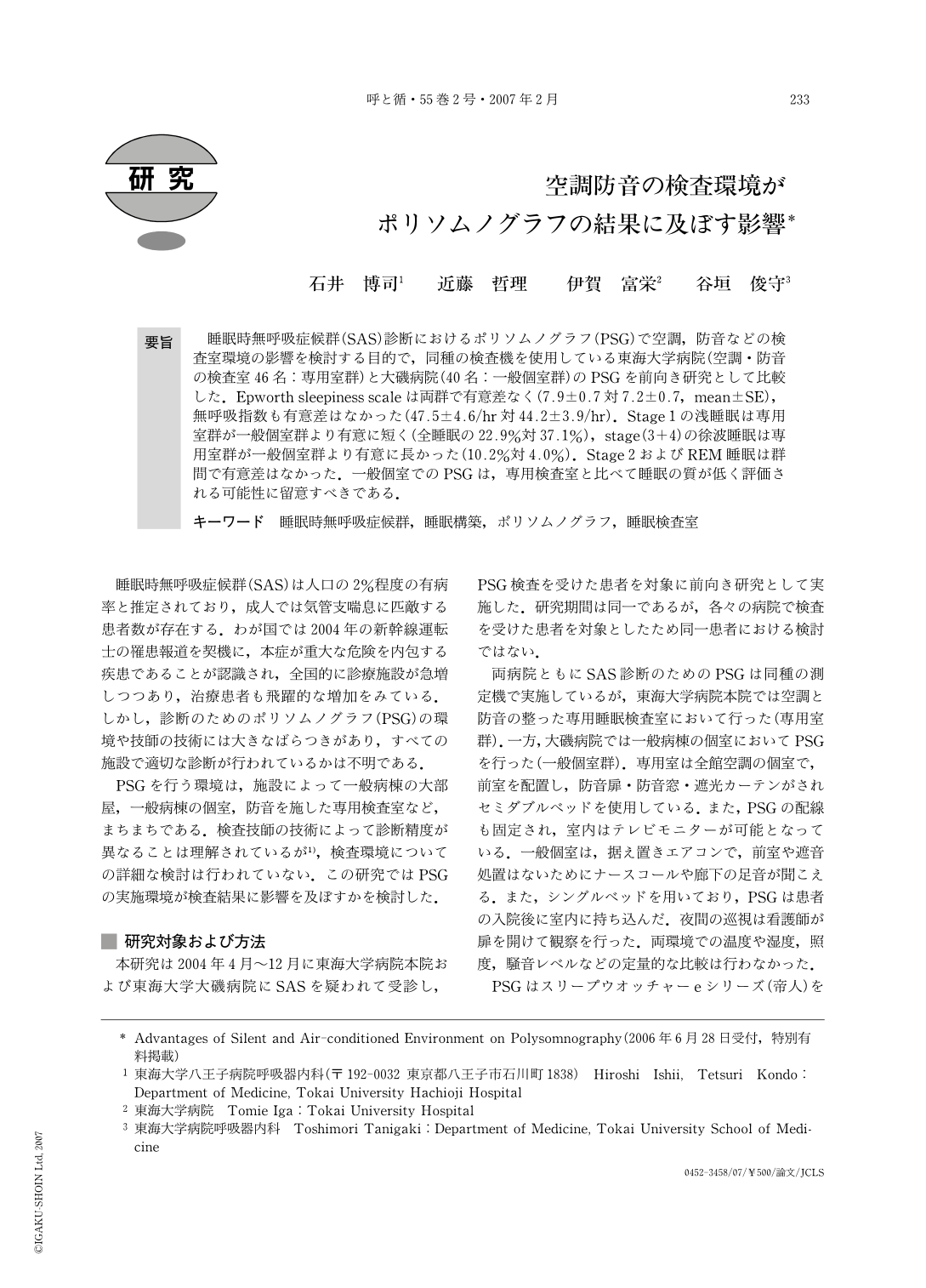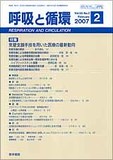Japanese
English
- 有料閲覧
- Abstract 文献概要
- 1ページ目 Look Inside
- 参考文献 Reference
睡眠時無呼吸症候群(SAS)診断におけるポリソムノグラフ(PSG)で空調,防音などの検査室環境の影響を検討する目的で,同種の検査機を使用している東海大学病院(空調・防音の検査室46名:専用室群)と大磯病院(40名:一般個室群)のPSGを前向き研究として比較した.Epworth sleepiness scaleは両群で有意差なく(7.9±0.7対7.2±0.7,mean±SE),無呼吸指数も有意差はなかった(47.5±4.6/hr対44.2±3.9/hr).Stage1の浅睡眠は専用室群が一般個室群より有意に短く(全睡眠の22.9%対37.1%),stage(3+4)の徐波睡眠は専用室群が一般個室群より有意に長かった(10.2%対4.0%).Stage2およびREM睡眠は群間で有意差はなかった.一般個室でのPSGは,専用検査室と比べて睡眠の質が低く評価される可能性に留意すべきである.
Whether a silent and air-conditioned environment has any advantages for sleep is a question that has not yet been answered. We studied polysomnography(PSG) data obtained in Tokai University Hospital(a sound-insulated and air-conditioned room, n=46: sleep lab group) and data obtained in Oiso Hospital(a single room of general ward, n=40: general ward group). These hospitals use the same type PSG system. There were no significant differences between the two groups either in the mean Epworth sleepiness scale(7.9±0.7 vs. 7.2±0.7; mean±SE) or apnea hypopnea indices(47.5±4.6/hr vs. 44.2±3.9/hr). The duration of stage 1 sleep(22.9% vs. 37.1% of total sleep duration) in the sleep lab was significantly shorter than that in the general ward while duration of stage(3+4) sleep in the sleep lab was significantly longer than that in the general ward(10.2% vs. 4.0%). Stage 2 sleep and REM sleep durations in the two groups were not significantly different. In conclusion, we should be aware that PSG performed in a general ward may underestimate the quality of sleep there.

Copyright © 2007, Igaku-Shoin Ltd. All rights reserved.


